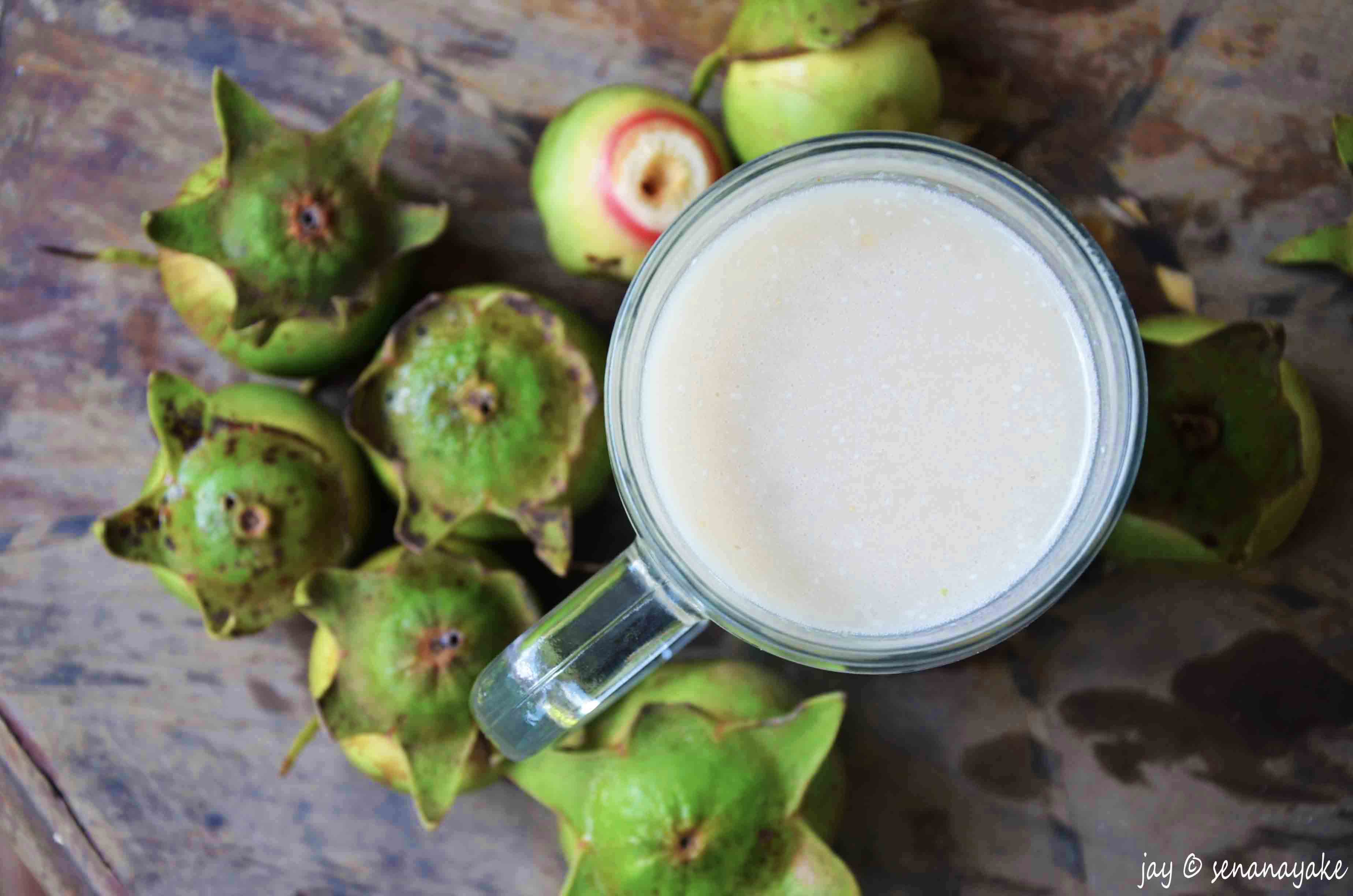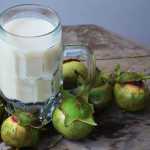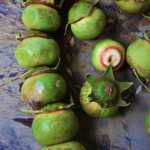Sri Lanka hides within its bosom many culinary and herbal secrets. It is a diverse land, each region guarding many mysteries and unique cultural curiosities within its virgin tropical forests that are little known among the rest of the island, let alone the world. The divine tasting ‘Kirala’ drink is just one of the south coast’s best guarded secrets. Bearing the scientific name Sonneratia caseolaris, Kirala, also known as the Mangrove Apple grows in the brackish marshlands on littoral riverbanks where the tides rise and fall. Kirala is endemic to countries with a tropical climate and is prepared in various ways in various countries. For us Sri Lankans, especially those living in the southern coast, we like it sweet, with a dash of coconut milk to sip at.
When travelling down south if you are really paying attention, you will see a handful of places selling this refreshing kirala drink. If you do, by all means, slam on your brakes, barge right in and demand for your glass of kirala drink! Because even if you do come across some kirala fruits, you really need to know what you’re doing in order to make this drink. Careless handling of the fruit can turn it sour and bitter and quite plainly, tasting god awful.
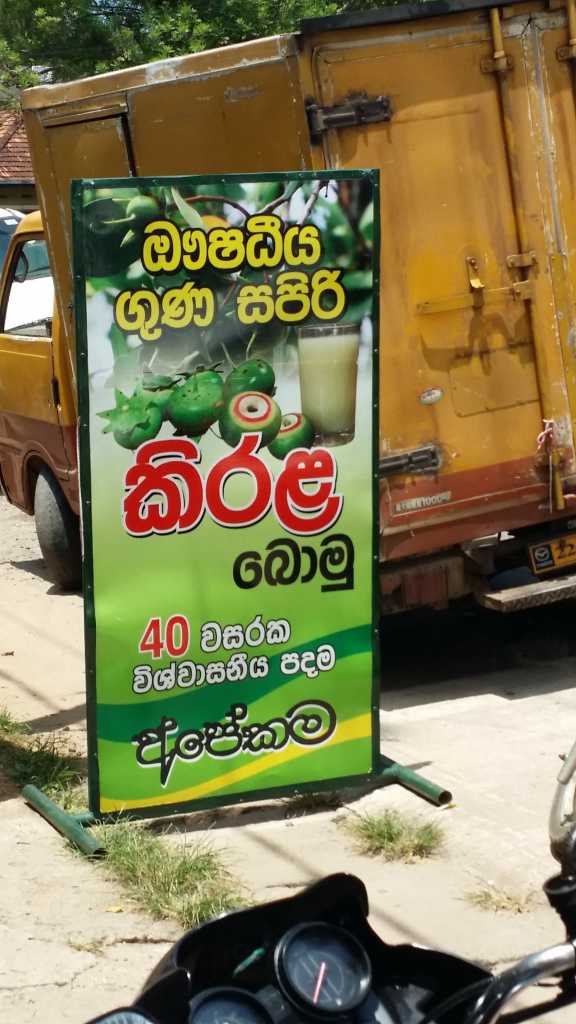
This is our usual kirala spot by the way side in Ginthota where I have been having my usual glass of kirala for the last 28 years whenever we headed downsouth. They never fail to deliver with their tall glasses of ice cold deliciousness!
Sometimes on the wayside, you will get a local or two selling kirala fruits! They are very difficult to spot though and seasonal, so if you see one, by all means buy some of these glorious fruits so that you can practice your kirala arts at home. Like I did the other day when I got overexcited to see the kirala sellers as we had passed them and had to drive back half a mile just to get some kirala.
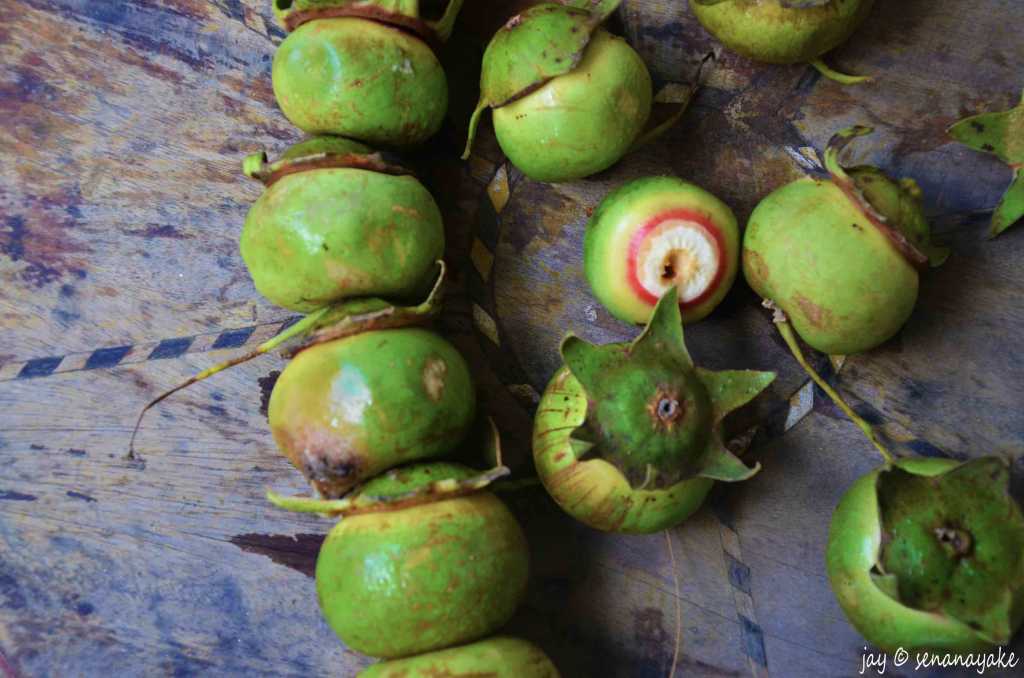 Kirala fruits are sold like this by these locals. They are pierced end to end with a coconut ickle and strung together like a string of pearls. Each ‘string’ would be about Rs 60-70. Don’t bargain because these are hardworking villagers trying to earn a living.
Kirala fruits are sold like this by these locals. They are pierced end to end with a coconut ickle and strung together like a string of pearls. Each ‘string’ would be about Rs 60-70. Don’t bargain because these are hardworking villagers trying to earn a living.
So now you’ve got your kirala (hopefully) and you are wondering what in the world to do with it. Both my parents are born and bred downsouth so I am fortunate enough to have a seasoned kirala maker all for myself who showed me the do’s and don’ts of this intricate process. And I’m passing it on to you. Here’s what you do.
Kirala juice
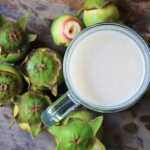
- Prep Time : 15 minutes
- Yield : 4
Ingredients
- Kirala fruits - 9-10
- Cold water - 4 cups, plus more for sieving
- Thick coconut milk - 1 cup (Optional)
- Sugar - To taste
- Salt - A pinch
Instructions
- Cut the fruits in half. You should see a whitish flesh flecked with seeds with a brownish part in it. Remove this brown part completely and scoop out the flesh and put it into a container. Don’t put a single bit of the fruit’s skin and watch out for worms. If you find any worms, just pop em in your mouth! (Just kidding)
- And then the fun part - Add some water and using your fingers, squeeze the flesh out so that all the juices are released. Yes ladies and gents, you’ve got to get your fingers dirty.
- Once you have done sufficient squeezing (I know, you just don’t want to stop!), strain the liquid out with a strainer, making sure that none of the seeds get into the drink.
- Add in the salt, the sugar and the coconut milk. Mix well until all the sugar has dissolved.
- Serve ice cold!
This drink on a hot tropical evening, whether gulped down in a hurry, sipped at with a straw seated on the beach or on your own home veranda is simply, heaven. Kirala has a very complex flavour profile. Are you familiar with woodapple? Kirala has a tinge of the woodapple taste but is not as pungent. What you get is a somewhat translucent, slightly thick drink coating your taste buds. The tartness of the kirala is enveloped in the thick creaminess of the coconut milk, which is again pierced by the kirala, only to be embraced again. The salt counteracts with the sweetness and the tartness, bringing out the hidden flavours not brought forth by the sugar while the sugar, well it just makes the whole thing bloom!
Kirala is known for its medicinal properties in oriental medicine. It is said to have cooling and its detoxifying properties, high level of antioxidants, soothing stomach ulcers, reducing blood pressure and the absorption of sugars and fat (perfect diet drink) and strengthening blood vessels. It is also a very good laxative and is also used to reduce inflammation and quell pains. The fruits and the leaves of the tree are also used as medicine that is applied to bruises and insect bites. All this was told to me by my mother who along with her sisters, used to pick kirala fruits from the trees after bathing in the river to make this juice with when she was small. Once home, one would do the squeezing while another would scrape the coconuts for the coconut milk she says, and everybody else (there were 5 of them in total), sat around in a half circle until the elder sisters had finished making the kirala juice. My mother is the youngest. So she was automatically entitled to any leftovers.
Next time when travelling down south, watch out for these locals selling kirala fruits along the roads. And when you do find it, do try this out. I assure you, like me, you will be hunting down kirala fruits all over the place from then onwards.
Helpful Tips
- Make sure that none of the seeds or the skin of the fruit get into the drink. The seeds and the skin are extremely acrid and the slightest mix can turn your drink from divine to god-awful.
- Do not blend! Use clean hands to extract the juice. Blending damages the seeds and mixes it in with the juice. This can turn your drink bitter.
- Handle the fruits carefully. Do not squash them. Since these vendours mostly just gather the fruits that had fallen on the ground after being ripened as opposed to plucking them off the tree, the kirala tends to be extremely soft at the time of purchase. If the fruits do get damaged, then chances are your drink will take on a funny taste.
- Make the drink as soon as you can. The fresher the fruits are, the tastier your drink will be.
- Coconut milk can be omitted if you are not a huge fan. Substitute it with more water instead.
- Adjust the thickness as you like. More water or coconut milk if you like it watery, go easy on the liquids if you like it thick.

